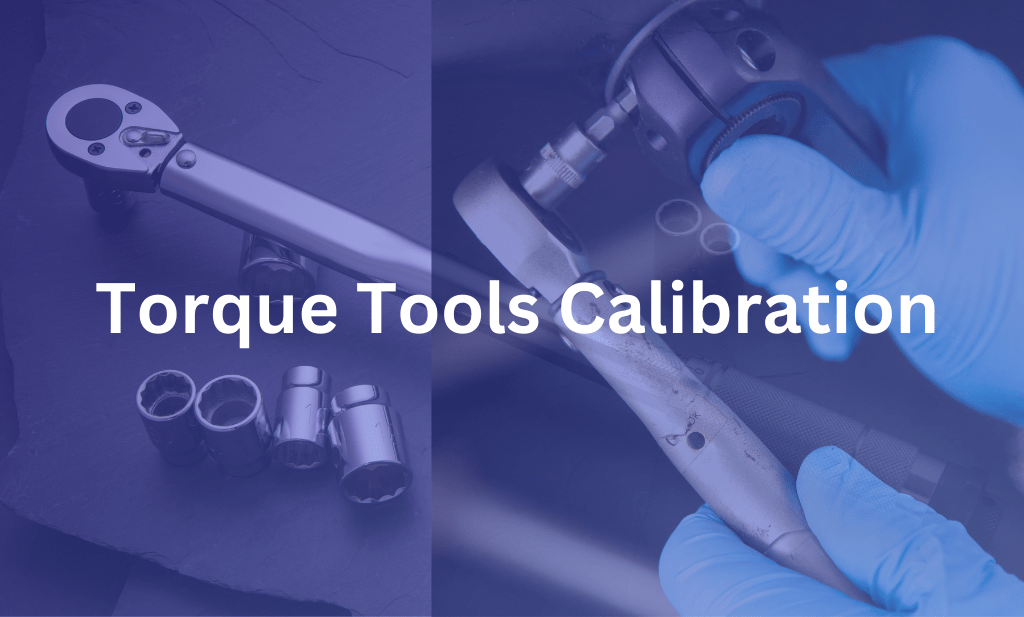- July 4, 2023
- by Emmanuel
- Calibration
In the field of mechanical engineering, precision and accuracy are of utmost importance. When it comes to torque tools, ensuring their calibration is vital to maintain the integrity and reliability of mechanical applications. Torque tools are widely used in industries such as automotive, aerospace, manufacturing, and construction, where the proper tightening of bolts, screws, and fasteners is crucial. This article explores the significance of torque tools calibration and its impact on mechanical applications.
1. Introduction
In mechanical applications, torque refers to the rotational force applied to an object. Torque tools, such as torque wrenches and screwdrivers, are designed to measure and apply precise amounts of torque. To ensure their accuracy, torque tools must undergo regular calibration.
2. What is Torque?
Torque is a measure of the force applied to rotate an object around an axis. It is usually represented in Newton meters (Nm) or foot-pounds (ft-lbs). Torque plays a critical role in various mechanical applications, including assembling machinery, tightening bolts, and maintaining equipment integrity.
3. The Importance of Torque Tools Calibration
Torque tools calibration is essential to guarantee the accuracy and reliability of torque measurements. When torque tools are not calibrated correctly, they can provide inaccurate readings, leading to under or over-tightened fasteners. This can result in mechanical failures, compromised safety, and additional maintenance costs.
4. Types of Torque Tools
There are several types of torque tools available, each with its own characteristics and applications. Some common types of torque tools include:
4.1 Click-Type Torque Wrenches
Click-type torque wrenches are widely used in automotive and industrial applications. They have a click mechanism that produces an audible sound when the desired torque is reached, alerting the user to stop applying force.
4.2 Electronic Torque Wrenches
Electronic torque wrenches are equipped with sensors and digital displays, providing precise and real-time torque readings. They are commonly used in high-precision industries where accuracy is crucial.
4.3 Dial Torque Wrenches
Dial torque wrenches have a dial gauge that displays torque readings. They are known for their durability and simplicity, making them suitable for various mechanical tasks.
5. Calibration Process for Torque Tools
To ensure the accuracy of torque tools, a systematic calibration process must be followed. This process involves several key steps:
5.1 Standards and Regulations
Torque tools calibration should adhere to international standards and regulations, such as ISO 6789:2017. These standards provide guidelines for the calibration process, ensuring uniformity and accuracy across different industries.
5.2 Calibration Equipment
Calibration requires specialized equipment, such as torque testers and calibration machines. These tools are used to verify the accuracy of torque tools by applying known forces and comparing the results.
5.3 Calibration Procedure
The calibration procedure involves applying a range of known forces to the torque tool and comparing the readings to the reference standards. Adjustments are made if necessary to align the tool with the desired accuracy.
6. Benefits of Torque Tools Calibration
Calibrating torque tools brings several benefits to mechanical applications:
- Enhanced Accuracy: Calibrated torque tools provide precise torque readings, ensuring optimal tightening of fasteners.
- Improved Safety: Accurate torque application reduces the risk of fastener failure, preventing accidents and injuries.
- Compliance with Standards: Calibrated torque tools meet industry standards and regulatory requirements.
- Cost Savings: Properly calibrated torque tools reduce the need for rework, maintenance, and replacement of damaged equipment.
7. Common Challenges in Torque Tools Calibration
Despite the importance of torque tools calibration, there are challenges that technicians may encounter:
- Environmental Conditions: Extreme temperatures, humidity, and dust can affect the performance and accuracy of torque tools.
- Wear and Tear: Over time, torque tools can experience wear and require adjustments or replacement parts.
- Operator Error: Improper handling, misuse, or incorrect storage can impact the accuracy of torque tools.
8. Best Practices for Torque Tools Calibration
To ensure the effectiveness of torque tools calibration, the following best practices should be observed:
8.1 Regular Calibration Schedule
Establish a routine calibration schedule based on the frequency of tool use, manufacturer recommendations, and industry standards. Regular calibration ensures ongoing accuracy and reliability.
8.2 Qualified Calibration Service Providers
Choose reputable calibration service providers that have the expertise, experience, and appropriate calibration equipment to calibrate torque tools accurately.
8.3 Proper Handling and Storage
Properly handle and store torque tools to minimize wear and maintain accuracy. Avoid dropping or subjecting them to excessive force or impact. Store them in a clean and dry environment.
Conclusion
Torque tools calibration is crucial for maintaining precision in mechanical applications. By ensuring the accuracy of torque measurements, calibrated tools enhance safety, compliance, and efficiency. Regular calibration, adherence to standards, and proper handling are key factors in achieving reliable torque measurements.
Call us to discuss your calibration, test or repair needs at:
713.944.3139.



